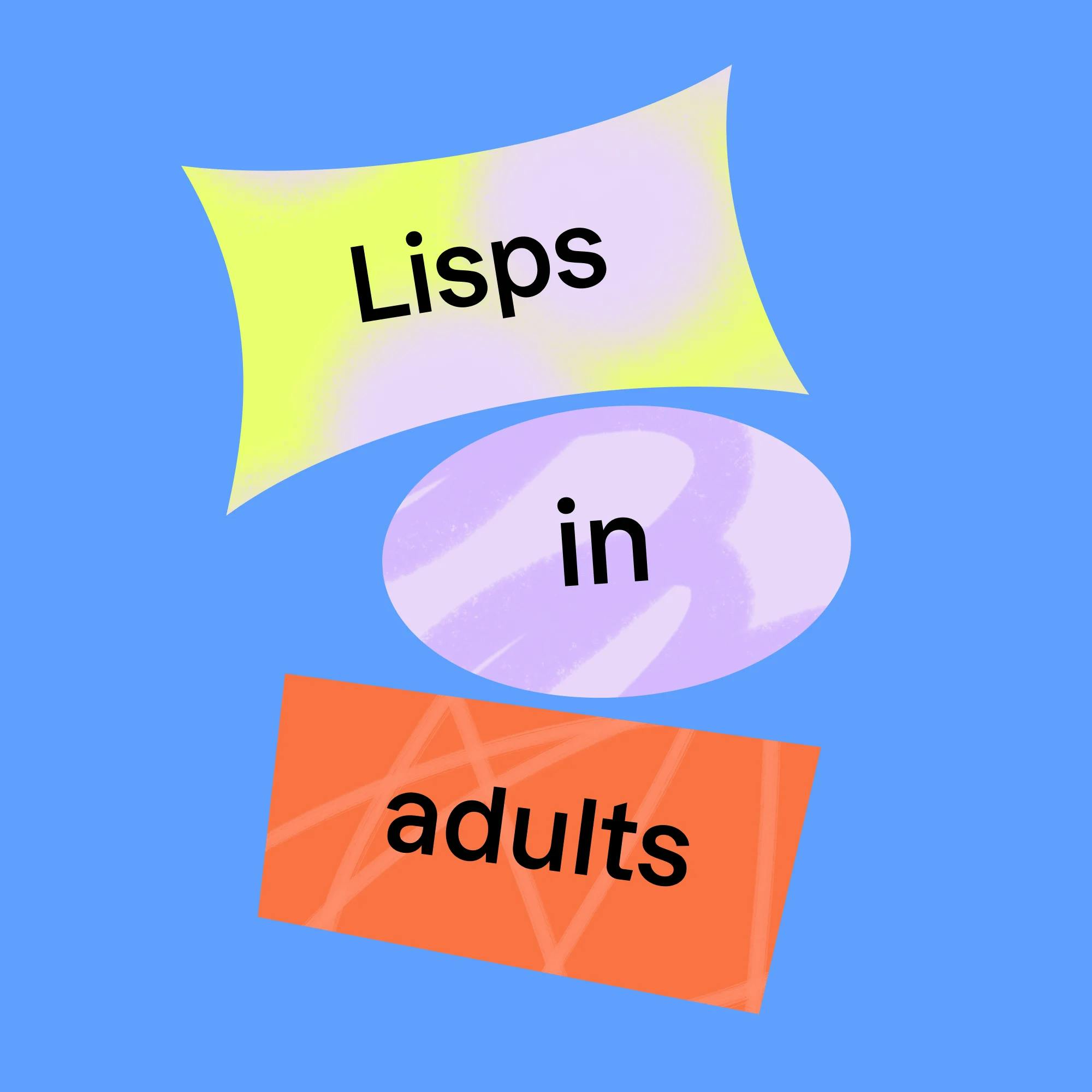As an adult, you may think that you’re “too old” to work on your speech. But many adults would like to improve the way they pronounce certain speech sounds. This is called articulation.
The good news is–you’re never too old to learn anything! According to many studies, the concept of neuroplasticity shows us that the brain can be shaped to learn (and unlearn) patterns at any age. This is great news for adults who would like to correct speech problems.
What is an articulation disorder?
An articulation disorder, or speech sound disorder, is characterized by difficulties or impairments in producing certain speech sounds correctly. It is a communication disorder that affects the way people pronounce specific sounds, syllables, or words.


What does a speech sound disorder sound like?
Articulation disorders can show up in speech in different ways, such as:
Substituting one sound for another
Omitting sounds
Distorting sounds
Adding extra sounds
These difficulties can affect your intelligibility, or how clear your speech is. As a result, when you talk, it may be hard for other people to always understand you. This is an important consideration for anyone, but especially for people who rely on communication in their job.
Articulation disorders can range from mild, involving a single sound, to severe, encompassing a number of sounds. It’s important to note that even if only one sound is affected, that sound may occur often in speech, such as the /s/, /r/, and /l/ sounds. Problems with these speech sounds are common, and these sounds appear in many English words. You likely say them many times throughout the day. So if you have problems pronouncing these sounds, it can affect the clarity of your speech.


What causes speech sound disorders in adults?
There are four possible causes for speech sound problems in adults. In some cases, more than one of these issues is present.
1 Hearing loss, especially during childhood
When we’re young, it’s a critical time in our development for learning speech and language. If a young child has hearing loss, or even ear infections, they may hear a speech sound incorrectly and establish an incorrect model in their brain. Then, when the child speaks, they’re attempting to match an incorrect motor pattern. Eventually, the brain engrains this incorrect pattern.
As an adult, you may not be able to recognize this incorrect motor pattern. However, with a qualified speech-language pathologist, also known as a speech therapist, you can learn to understand and hear the error, and make new motor patterns to produce the sound correctly.
2 Structural issues
When you think about it, speech is like a ballet in the mouth. Each part of the mouth needs to be in the correct place, or it sounds “sloppy” or incorrect.
In some cases, a person’s teeth, lips, tongue, or mouth shape may have issues that impact their ability to produce speech sounds correctly. These can include a dental issue such as a misaligned bite, narrow arched hard palates, or cleft palates with or without repair.
If there is a plan in place to correct these problems, speech therapy should wait until any procedures are complete. If procedures will not be performed, then a speech therapist can help you learn to minimize the issue of structural differences and speak more clearly.
3 Trauma
Some people experience an accident or other trauma involving the jaw, tongue, or lips that leads them to move those body parts differently. This movement pattern then becomes a habituated speech pattern. A speech therapist can help establish a correct pattern for clearer speech.
4 Motor coordination
Some people have underdeveloped muscles in the mouth, which leads to their speech sounding distorted. A speech therapist can assess adequate strength, range of motion, and precision of movement for the speech muscles. They can also provide exercises to strengthen those muscles.


What is done in speech therapy for adults
How do adults fix speech problems? The process starts with a speech evaluation. A speech evaluation for adults typically takes about 45 minutes. The speech therapist will ask you questions and have you read words, phrases, and sentences. This way they can assess how you make various sounds and sound combinations in different positions of words.
The therapist will have you move your mouth in different ways to assess the strength, range of motion, and precision of movement. Finally, they may have you try a few sounds or movements to determine the best place to start with your treatment, if it is determined that you need speech therapy.
The goal of speech therapy is to make progress as quickly as possible. To achieve this, your speech therapist will explain what, when, and how to practice between sessions.
In most cases, speech therapy sessions will begin with training your ear to listen for the correct speech sound target that you’re trying to achieve. The speech therapist will use a variety of models, pictures, and descriptions to help you understand how to achieve the best sound productions.
Speech therapy sessions follow a hierarchy. In most cases, you’ll start with learning your new sounds in words, then move on to phrases, sentences, and conversation.
The goal of speech therapy for adults is to make progress as quickly as possible. To achieve this, your speech therapist will explain what, when, and how to practice between sessions. This will reduce your chances of practicing incorrectly and reinforcing the wrong movements.

How long does speech therapy for adults take?
Oh, the ever important (and unable to be answered!) question. Everyone wants to know, but we can never be precise. We do know that a key part of the answer is summed up in one word: practice.
You don’t need to practice for hours a day. Since articulation is a motor pattern, small “chunks” of daily practice are needed. This is how you carry over the speech sound movement from making a conscious effort to becoming automatic when you talk.
Your speech therapy sessions themselves aren't enough for practice. The session is meant to determine where you are in your treatment process, move you forward, and establish your recommended daily practice for the rest of the week. Practicing 10 to 15 minutes per day, every day, will make a big difference.


How to practice correcting speech problems at home
Practice is more than simply saying the words or sounds that your speech therapist gives you. It’s spending uninterrupted time in a quiet location to feel the movements of your mouth and hear the way you produce the sounds.
Here’s a pro tip: Try practicing right after brushing your teeth in the morning and evening. Your mouth is fresh and tingling from the toothpaste, your brain is heightened to the feeling in your mouth, and it’s usually quiet. Plus, you’re standing in front of a mirror, so you can watch yourself making the movements.
How long it takes to finish speech therapy is directly related to how often and how well you practice.
You can record yourself speaking, then listen to it afterward. Some speech therapists encourage submitting your recordings between sessions to motivate you to practice and to get some mid-week feedback. If that service is offered, take advantage!
How long it takes to finish speech therapy is directly related to how often and how well you practice. Everyone comes from somewhere different, so we might take different lengths of time. But if we all take the same path, we’ll end up in the same place eventually: clear speech!
How Expressable Can Help
Concerned your child isn't reaching age-expected milestones? Looking for communication support from a professional? Expressable is a national online speech therapy practice serving children and adults. We treat all major areas of communication and feeding, offer flexible hours including evenings and weekends, and accept most major health insurance plans. We’re proud to have earned more than 3,000 5-star reviews from our clients (4.9/5 average).
Our therapy model is centered on parent and caregiver involvement. Research proves that empowering caregivers to participate in their loved one’s therapy leads to better outcomes. That’s why we combine live, 1-on-1 speech therapy with personalized education and home practice activities for faster progress.
Communication is more than words. It’s how we share how we feel and show who we are. We’re here to help you or your child do just that.
 Laura Thorburn, M.S., CCC-SLP
Laura Thorburn, M.S., CCC-SLP










